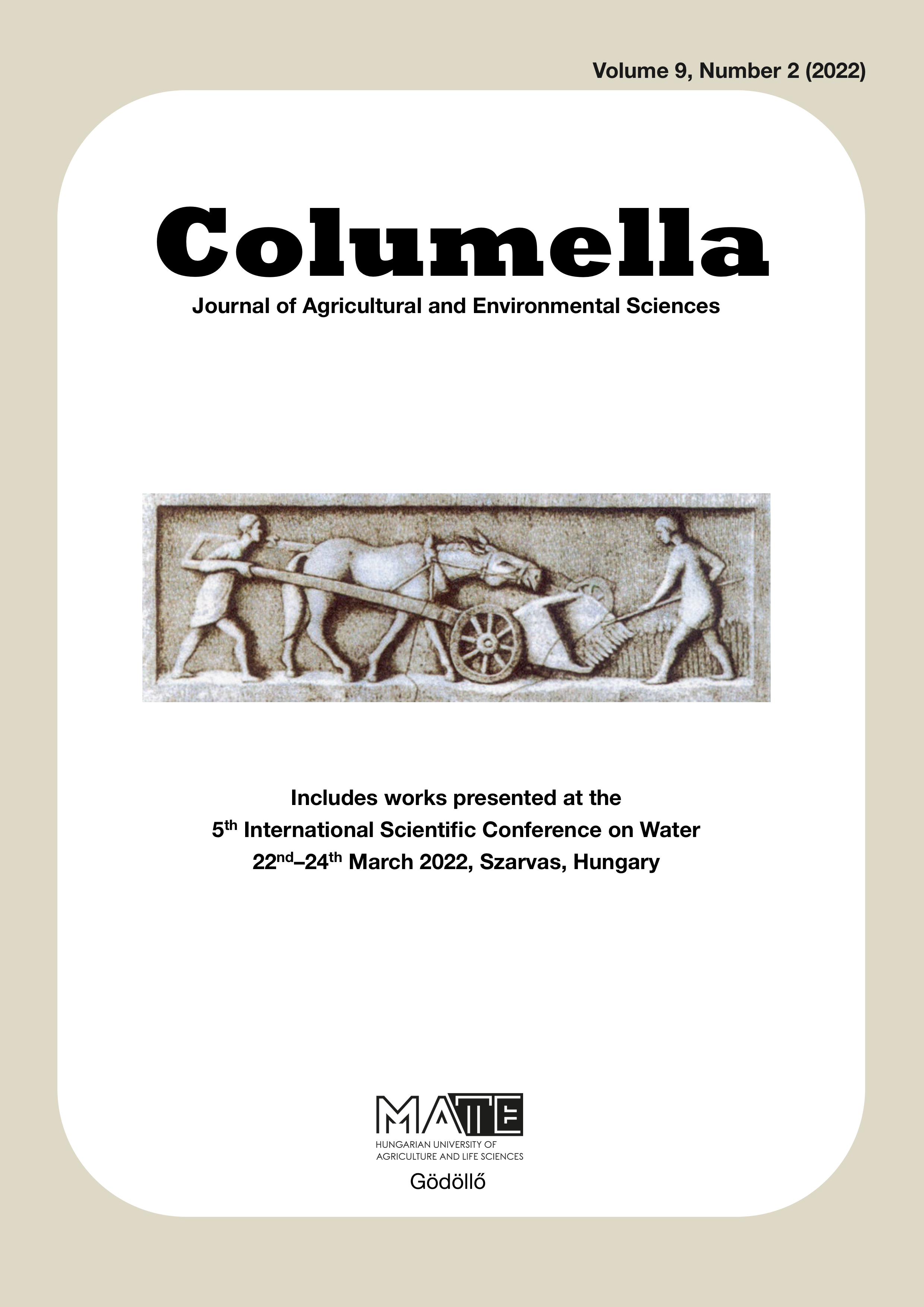Investigation of different nutrient levels applied during irrigation in the self-rooted and grafted watermelon production
DOI:
https://doi.org/10.18380/SZIE.COLUM.2022.9.2.101Keywords:
watermelon, irrigation, water-soluble, fertilizer, graftedAbstract
My work in the form of water-soluble fertilizers for self-rooted and grafted watermelon cultivation, applied simultaneously with irrigation, it concentrates on examining different nutrient levels during the growing season. Within that, I focused on the application of macronutrients - nitrogen, phosphorus, potassium. Therefore, I set up 4 different nutrient levels for both types of seedlings, in two replicates, of which I developed a phosphorus, a nitrogen, and a potassium overweight nutrient level, and a nutrient level in which all three nutrients were in equal proportions. The latter formed the control. For both self-rooted and grafted seedlings, I wondered whether changes in nitrogen, phosphorus, and potassium would affect, and if so, the positive or negative direction of plant development, or the quality or the weight of the crops.
My research pointed out that at the beginning of the growing season, before or during the first flowering period, higher amounts of phosphorus applied simultaneously with irrigation have a positive effect on the development and yield and quality of grafted plants throughout the growing season. Higher phosphorus content applied by irrigation before and during the first flowering period also promotes flowering of self-rooted plants and improves their crop quality. But in their case, the higher potassium active substance applied during the ripening period has the most positive effect on their yield results.
Respectively, the experiment showed that the nutrients applied during nutrient solution are of great importance.
References
Balázs, G. (2013). Az oltás hatása, szerepe és jelentősége a magyarországi sárga- és görögdinnye termesztésben. The effect, role and importance of grafting in musk- andwatermelon cultivation in Hungary. In (p. 12-66).
Balázs, S. (2004). Zöldségtermesztők kézikönyve. Budapest: Mezőgazda Kiadó.
Davis, A. R., Perkins-Veazie, P., Hassell, R., Levi, A., King, S. R., & Zhang, X. (2008). Grafting Effects on Vegetable Quality. HortScience 43(6), 1670-1672. doi: https://doi.org/10.21273/hortsci.43.6.1670
Goreta, S., Perica, S., Dumicic, G., Bucan, L., & Zanic, K. (2005). Growth and Yield of Watermelon on Polyethylene Mulch with Different Spacings and Nitrogen Rates. HortScience 40(2), 366-369. doi: https://doi.org/10.21273/hortsci.40.2.366
Hochmuth, G. J., Hanlon, E. A., & Cornell, J. (1993). Watermelon Phosphorus Requirements in Soils with Low Mehlich-I-extractable Phosphorus. HortScience 28(6), 630-632. doi: https://doi.org/10.21273/hortsci.28.6.630
Hodossi, S., Kovács, A., & Terbe, I. (Eds.). (2004). Zöldségtermesztés szabadföldön. Budapest: Mezőgazda Kiadó.
ICL. (2015). Vízben oldható műtrágyák. Retrieved 29.11.2022, from https://icl-sf.com/hu-hu/explore/zoelds-g-gyuemoelcs-s-sz-nt-foeldi-noev-nyek/v-zben-oldhat-m-tr-gy-k/
Knott, J. E., & Tamás, K. (1973). Zöldségtermesztők zsebkönyve az USA-ból. Budapest: Mezőgazdasági Kiadó.
Locascio, S., Fiskell, J., Everett, P., & Crall, J. (1966). Watermelon response to copper and a complete micronutrient source. In Proceedings of the florida state horticultural society (Vol. 79, p. 150-154).
Nagy, J. (1994). Dinnye. Budapest: Mezőgazda Kiadó.
Nagy, J. (1997). Dinnye, uborka, tök (kabakosok). Budapest: Mezőgazdasági Szaktudás Kiadó.
Nagy, J. (2000). A dinnye és termesztése. Budapest: Mezőgazdasági Szaktudás Kiadó. Nagy, J. (2005). A sárga- és görögdinnye. Budapest: Szaktudás Kiadó Ház.
Rolbiecki, R., Rolbiecki, S., Piszczek, P., Figas, A., Jagosz, B., Ptach, W., . . . Kazula, M. J. (2020). Impact of Nitrogen Fertigation on Watermelon Yield Grown on the Very Light Soil in Poland. Agronomy 10(2), 213. doi: https://doi.org/10.3390/agronomy10020213
Scott, W., & McCraw, B. (1990). Calcium fertilization and cultivar affect watermelon rind thickness and resiliency. HortScience 25(9), 1075d-1075. doi: https://doi.org/10.21273/hortsci.25.9.1075d
Tóth, Á. (2006). A XXI. század öntözőrendszerei. Budapest: Visionmaster Studió - Aquarex ’96 Kft.,.
Z. Kiss, L., & Rédai, I. (2005). A zöldségtermesztés, -tárolás, -értékesítés szervezése és ökonómiája. Budapest: Mezőgazda Kiadó.
Downloads
Published
Issue
Section
License
Copyright (c) 2022 Patrik Krizsán

This work is licensed under a Creative Commons Attribution-NonCommercial-NoDerivatives 4.0 International License.










